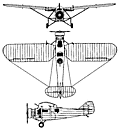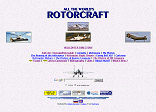|
| Designed by Herbert Smith, the Sopwith designer working in Japan, the Mitsubishi 4MS1 prototype crew trainer made its maiden flight in 1930. Production continued until 1941, and examples pressed into service as liaison aircraft in the postwar period were to be found in a variety of national markings. A strut-braced high-wing cabin monoplane with fixed wide-track landing gear, the 4MS1 was powered by a single engine. The first K3M2 production version entered naval service in 1932 as the Type 90 Crew Trainer, in which configuration pilot and gunner were located in separate open cockpits, with instructor and two pupils in the enclosed cabin. Later liaison/passenger variants accommodated,five passengers in the cabin. Total production of all versions amounted to 625.
 | A three-view drawing (752 x 816) |
| MODEL | K3M3 |
| CREW | 4 |
| ENGINE | 1 x Nakajima "Kotobuki-2", 435kW |
| WEIGHTS |
| Take-off weight | 2200 kg | 4850 lb |
| Empty weight | 1360 kg | 2998 lb |
| DIMENSIONS |
| Wingspan | 15.78 m | 52 ft 9 in |
| Length | 9.54 m | 31 ft 4 in |
| Height | 3.82 m | 13 ft 6 in |
| Wing area | 34.5 m2 | 371.35 sq ft |
| PERFORMANCE |
| Max. speed | 230 km/h | 143 mph |
| Ceiling | 6390 m | 20950 ft |
| Range | 790 km | 491 miles |
| ARMAMENT | 1 x 7.7mm machine-guns, 4 x 30-kg bombs |
|
Do you have any comments?
|
| 
COMPANY
PROFILE
All the World's Rotorcraft
|







